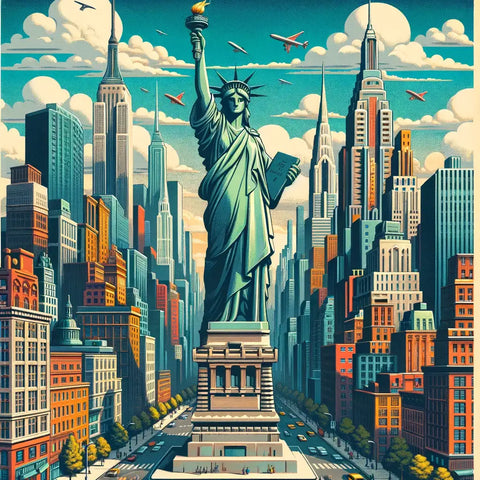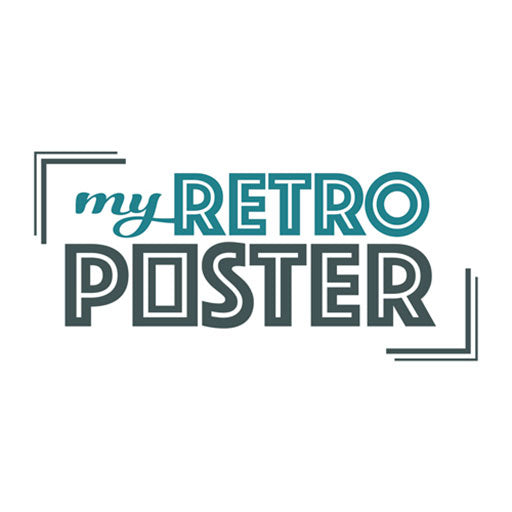Unveiling the Art of Authenticity: Distinguishing Genuine Creations in the AI Era
In recent times, the art world has experienced a seismic shift with the advent of AI-generated art. While this new wave of technology brings innovative dimensions to creativity, it also presents a challenge for art enthusiasts and collectors: distinguishing between AI-generated art and pieces crafted by human artists. This blog post delves into practical strategies to help you recognize and appreciate authentic artwork, ensuring your support for real artists in the digital era.
1. The Timeline Tells the Truth A surefire way to ascertain the authenticity of artwork is by examining the company's and artworks' timeline. Myretroposter has been a beacon of originality and authenticity in the poster world since 2018, a time when AI-generated art was not just rare; it was virtually non-existent. This fact alone stands as a testament to the human creativity and effort that goes into each of our pieces.

2. Incoherence: AI's Achilles Heel AI-generated art, though visually striking, often falls short in accurately portraying real-world scenes. Look for inconsistencies or implausible elements in artworks, like travel posters with fictional landmarks. A notable example is AI-created posters of Paris showing the Eiffel Tower spanning both banks of the Seine, a geographical impossibility. Such errors are clear indicators of AI involvement.

3. Artist Interaction: The Human Connection Real art comes with real stories. Engaging with the artist or the selling platform can shed light on the human narrative behind each piece. This human connection, manifesting through artist interviews, social media engagement, or personal stories, is irreplicable by AI, and it imbues each artwork with unique emotional and creative depth.
4. Signature Styles and Techniques: The Human Touch Every artist has a distinctive style or technique, a personal imprint that AI cannot mimic. From unique brush strokes to consistent themes, these elements are hallmarks of human artistry. Familiarizing yourself with an artist’s style can help you distinguish their genuine works from those generated by AI.
5. Pricing and Production: The Economics of Art AI-generated art, capable of producing hundreds of designs daily without artist commissions, often comes at a lower price point. This economic aspect is crucial in identifying authentic art. Additionally, the proliferation of AI art makes it increasingly difficult for genuine artists to gain visibility, especially on platforms that do not actively protect their artists and clients from the onslaught of AI creations.
Conclusion: Navigating the world of art in the age of AI demands a discerning eye and an appreciation for the nuances that make genuine art stand out. By understanding the historical context, recognizing incoherencies, engaging with the human element, identifying signature styles, and considering the economics of art production, you can confidently support real artists and their irreplaceable contributions to our world.
Final Reflections / Important Postscriptum: As we conclude this exploration of distinguishing authentic art in the age of AI, it's crucial to acknowledge the positive role AI can play when used responsibly. Each image in this article, including the contrasting depiction of human and AI art production, is a creation of AI, showcasing its potential to aid in understanding and visualizing abstract concepts. This harmonious blend of AI's capabilities and human guidance exemplifies how technology can be a tool for good, enhancing our appreciation of art and the world around us.










